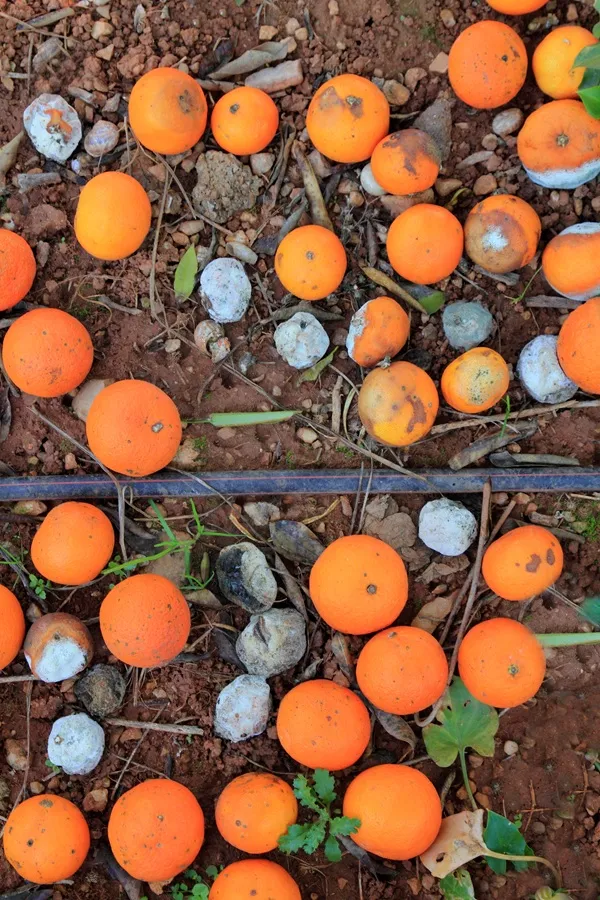Table of Contents
Nectarines: The Smooth-Skinned Sister of Peaches – A Complete Guide
Nectarines (Prunus persica var. nucipersica), often mistaken for fuzzless peaches, are a succulent and versatile fruit celebrated for their vibrant flavor and nutritional benefits. This article explores their global varieties, cultivation practices, culinary uses, and economic impact.
1. Global Varieties of Nectarines
Nectarines come in hundreds of cultivars, categorized by flesh color (yellow or white) and pit type (clingstone or freestone):
- Arctic Jay (USA): Yellow flesh, firm texture; ideal for shipping.
- Fantasia (USA): Juicy, tangy-sweet; popular in fresh markets.
- Sun Grand (USA): Early-season, large, and aromatic.
- Snow Queen (USA): White flesh, exceptionally sweet.
- Nectavigne (France): Red-blushed, wine-like flavor.
- Honey Blaze (Spain): Honey-sweet, high-yield variety.
2. Taste & Consumption
- Flavor Profile: Sweeter and slightly tangier than peaches, with a firmer texture. White nectarines are milder; yellow varieties are more acidic.
- Consumption:
- Fresh: Eaten raw, sliced in salads, or paired with cheeses.
- Grilled/Roasted: Enhances natural sweetness (e.g., grilled nectarines with goat cheese).
- Desserts: Cobblers, tarts, and sorbets.
- Preserves: Jams, chutneys, and compotes.
3. Nutrition & Health Benefits
- Nutritional Value (per 100g):
- Calories: 44 | Fiber: 1.7g | Vitamin C: 13% DV | Vitamin A: 9% DV
- Glycemic Index (GI): 43 (low), suitable for moderate diabetic consumption.
- Health Benefits:
- Antioxidant Rich: Beta-carotene and polyphenols combat free radicals.
- Digestive Health: Fiber promotes gut regularity.
- Skin Health: Vitamin C aids collagen synthesis.
4. Cultivation & Climate Requirements
- Ideal Conditions:
- Climate: Temperate (USDA zones 6–9); requires 600–900 chilling hours (<7°C) for dormancy.
- Soil: Well-drained, sandy loam; pH 6.0–6.5.
- Pollination: Self-fertile but benefits from cross-pollination (bees enhance yield).
- Challenges: Susceptible to brown rot, peach leaf curl, and frost damage.
5. Major Producers, Exporters & Importers
- Top Producers (2023):
- USA (California produces 95% of U.S. crop).
- Spain (Leading EU supplier; Murcia region).
- Italy (Renowned for white nectarines).
- China (Rapidly expanding production).
- Leading Exporters: Spain, USA, Chile, South Africa.
- Key Importers: EU nations, Canada, Japan, UAE.
6. By-Products & Processing
- Dried Nectarines: Sweet snacks or baking additions.
- Juices/Smoothies: Cold-pressed or blended.
- Nectarine Kernel Oil: Extracted from pits for cosmetics.
- Canned Nectarines: Preserved in syrup or juice.
7. Storage & Preservation
- Fresh:
- Store unripe nectarines at room temperature; refrigerate ripe ones (up to 5 days).
- Freezing:
- Blanch slices, coat in lemon juice, and freeze in airtight bags (10–12 months).
- Drying: Use sulfur treatment to retain color; dehydrate at 60°C for 12–18 hours.
8. Culinary Uses & Recipes
- Nectarine & Burrata Salad:
- Toss sliced nectarines with burrata, arugula, prosciutto, and balsamic glaze.
- Nectarine Galette:
- Arrange nectarine slices on pastry dough, sprinkle with sugar, and bake at 190°C until golden.
9. Return on Investment (ROI)
- Costs:
- Initial Setup: $12,000–$25,000/acre (saplings, irrigation, frost protection).
- Maintenance: Pruning, pest control, and disease management.
- Yield: 15–20 tons/hectare for mature orchards.
- Profitability: Fresh nectarines sell for $3–$6/kg; organic and premium varieties earn 20–30% more.
10. Challenges & Innovations
- Pests/Diseases: Peach leaf curl, aphids, and plum curculio.
- Solutions: Resistant rootstocks (e.g., Nemaguard), organic fungicides.
- Sustainability: Drip irrigation, integrated pest management (IPM), and solar-powered cold storage.
Conclusion
Nectarines, with their glossy skin and juicy flesh, bridge the gap between peaches and plums in flavor and versatility. From California’s orchards to Spain’s sun-drenched groves, they thrive in temperate climates and captivate global markets. Whether enjoyed fresh, grilled, or baked, nectarines offer a burst of summer sweetness and nutrition.
Pro Tip: Add a sprinkle of chili powder to nectarine slices for a sweet-spicy snack!
Indulge in the smooth, vibrant allure of nectarines – nature’s polished gem. 🍑✨








